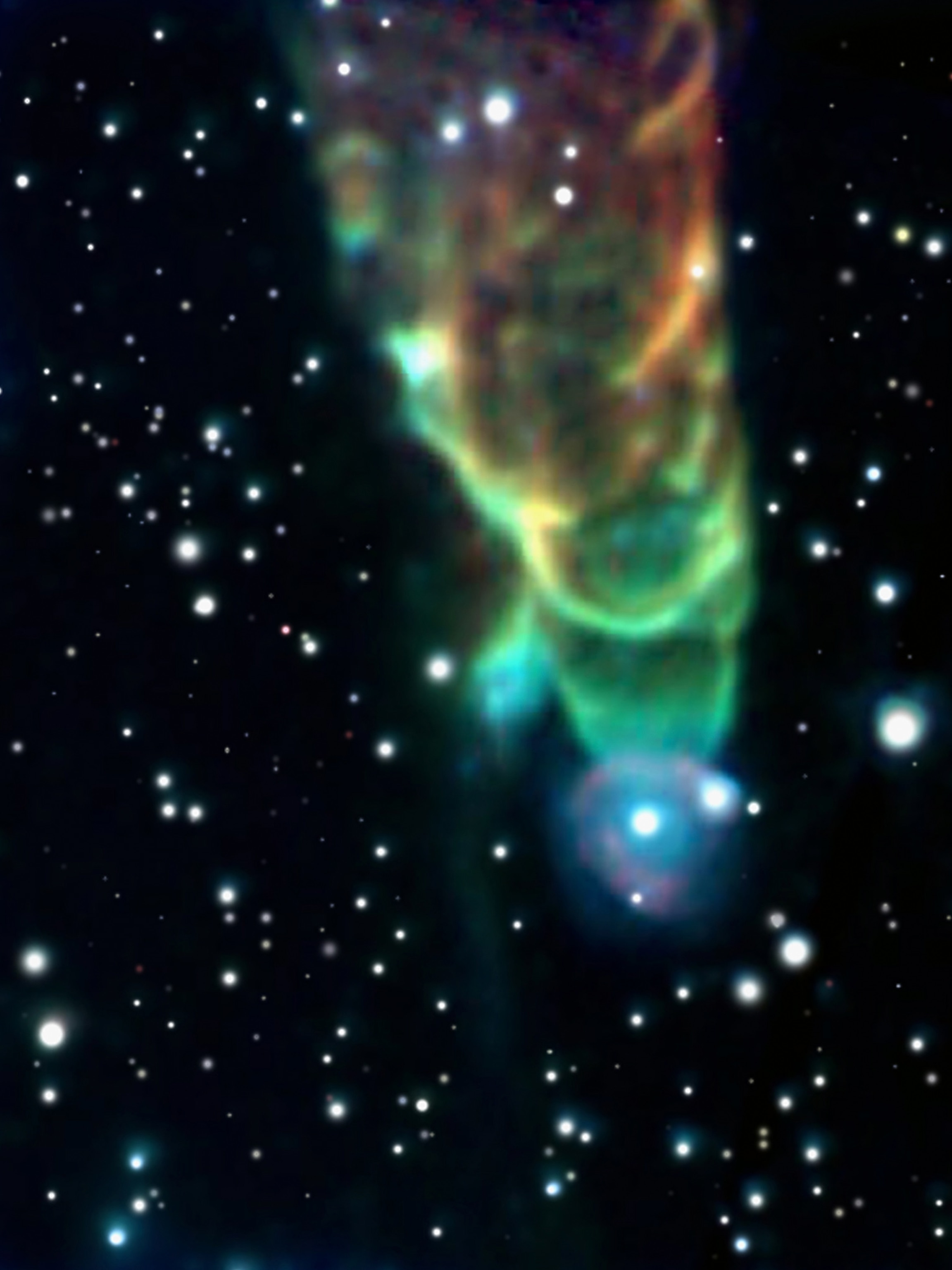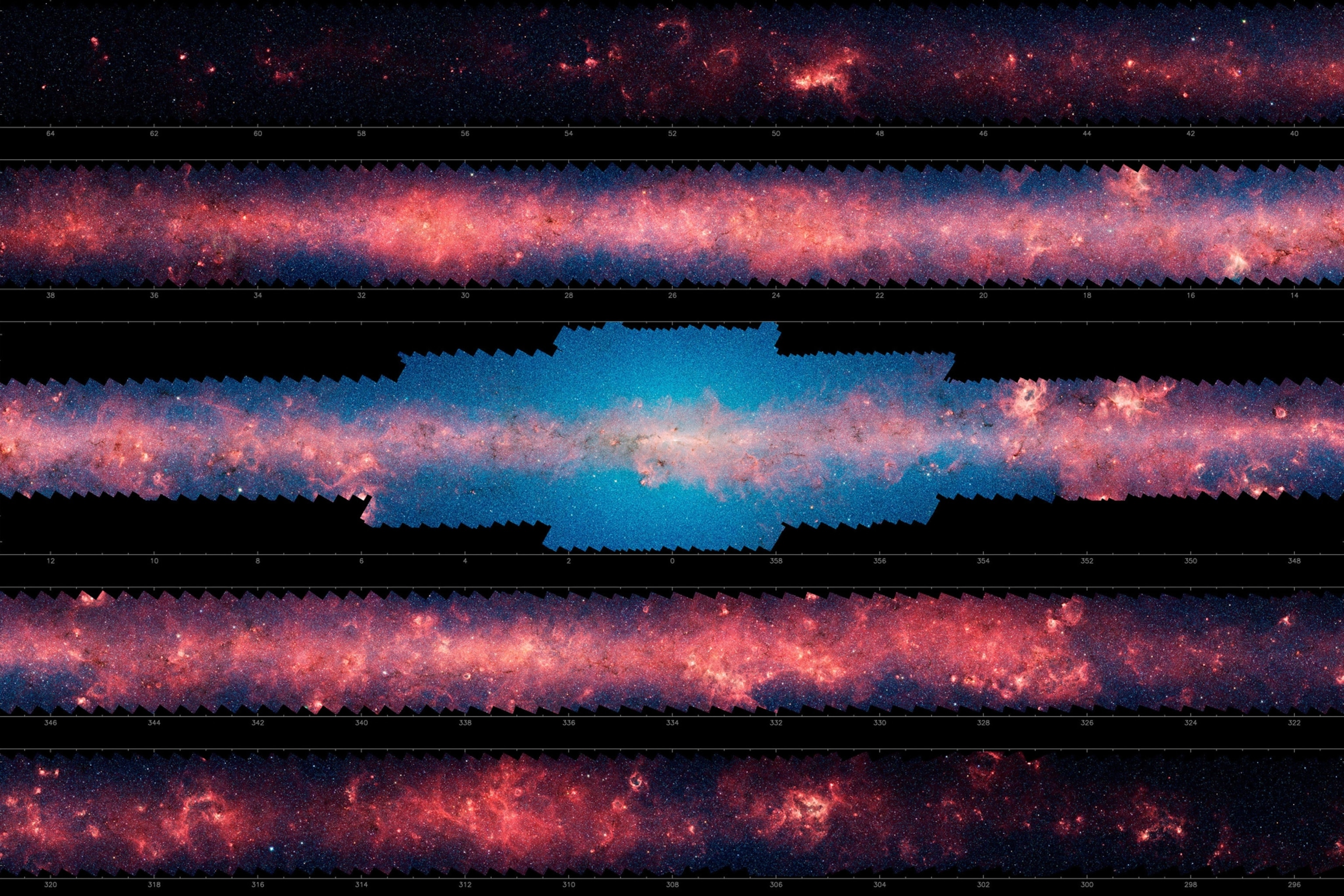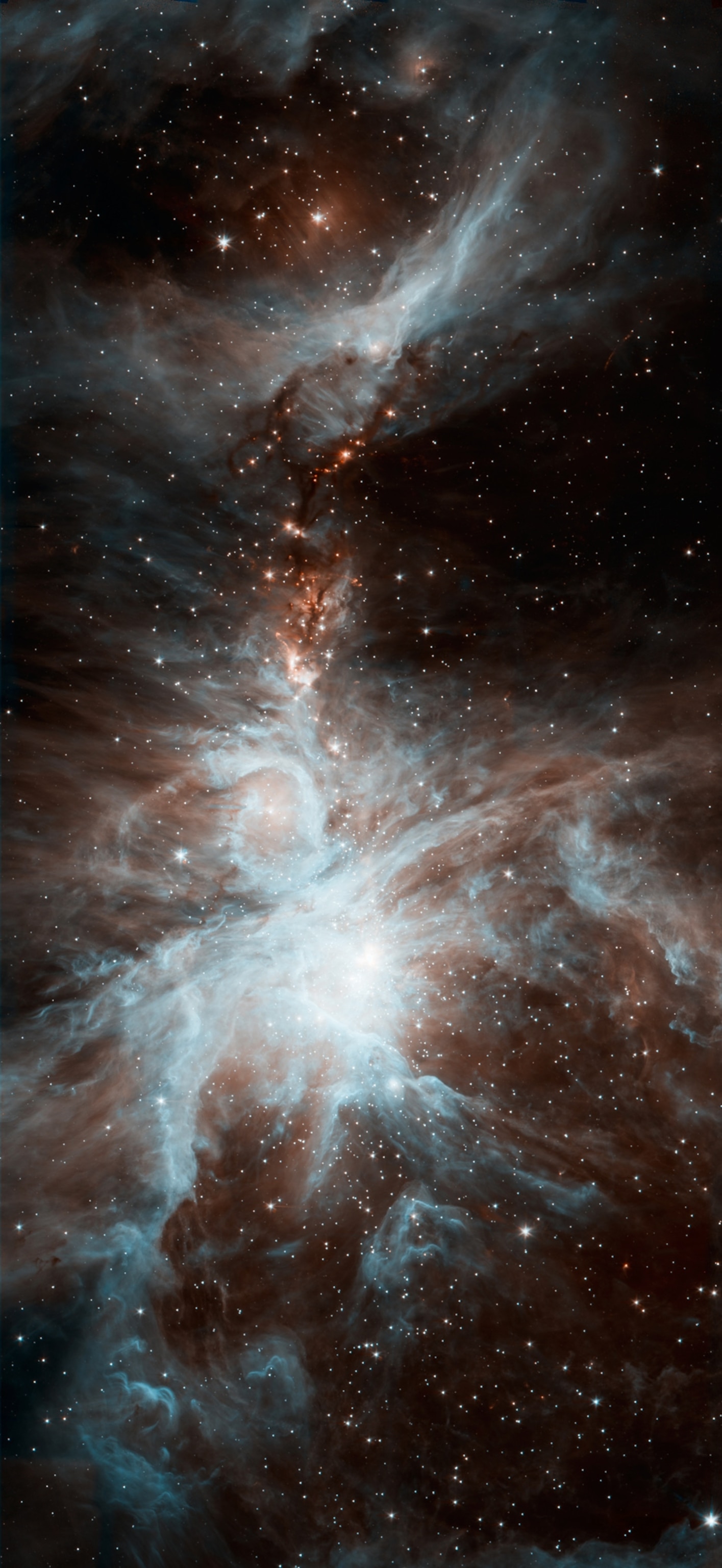Helix NebulaA newly expanded image of the Helix Nebula (pictured) is one of the ten infrared pictures chosen by scientists to celebrate the thousand days that the Spitzer Space Telescope has been working past its retirement date. NASA launched Spitzer on August 25, 2003, to peer inside thick dust clouds, obscured galactic cores, and other hidden regions of the cosmos. These unique abilities are thanks to its three instruments that record infrared light, a wavelength invisible to the human eye.(See "Birth of an Earthlike Planet Spied By Spitzer.")When Spitzer was launched, the space agency gave their $2.2-billion device a life span of five years. In 2008, scientists estimated, the telescope would run out of cryogenic coolant—a fluid required to chill Spitzer to near absolute zero (-460 degrees F/-273 degrees C)—and maintain its "heat vision."Even after the last coolant had boiled away on May 15, 2009, however, one camera was left functioning: the Infrared Array Camera, whose team selected the ten images shown here. The device takes infrared snapshots of space, including this view of the Helix Nebula, located some 650 light-years away. (See more nebulae pictures.)"The infrared light [in the nebula] is essentially heat coming from warm dust and gas," said Joseph Hora of Harvard University, a member of the Spitzer team."The benefit is you can see through normally dark clouds of gas. Here you can see greenish cometary knots in the shell."—Dave Mosher Image courtesy J. Hora, HSCfA, W. Latter, Herschel, and Caltech/NASA















